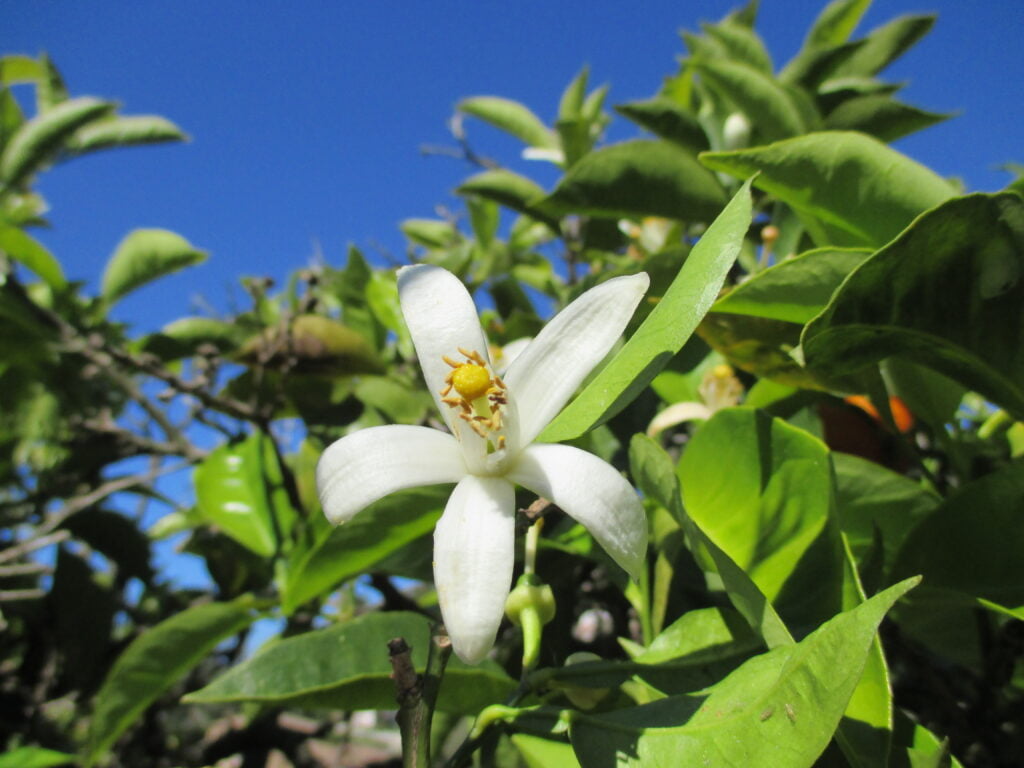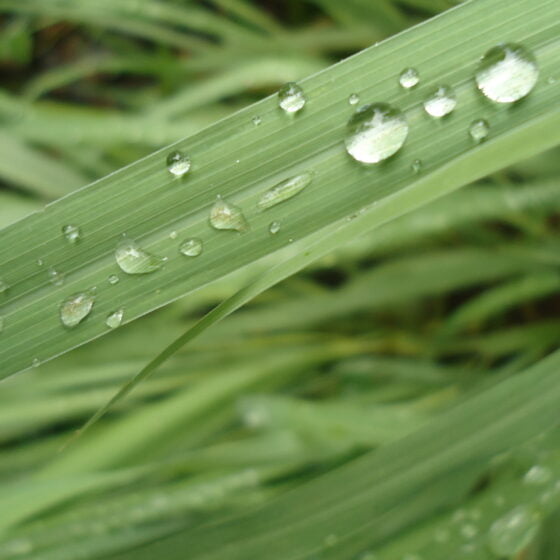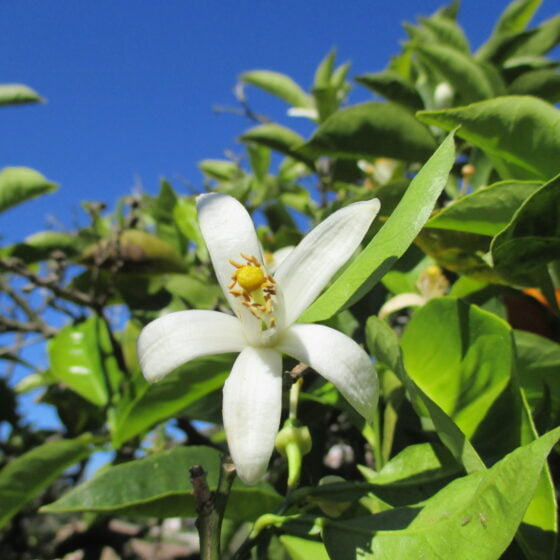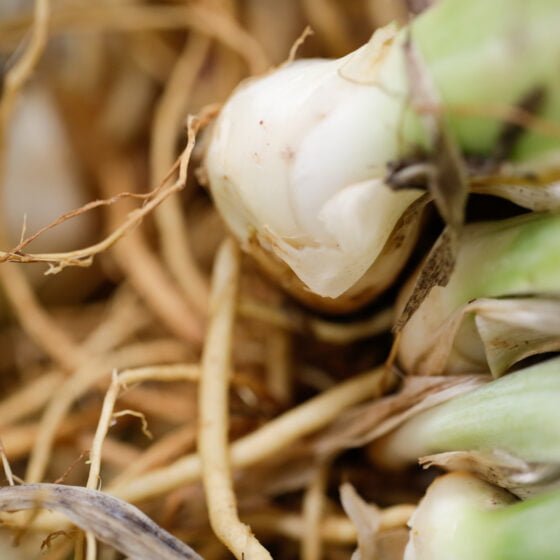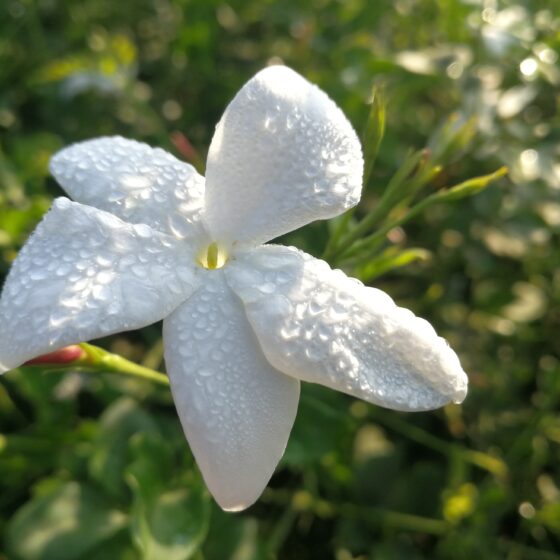
Orange blossom Tunisia
Citrus aurantium ssp amara
General data
Harvest Calendar
- J
- F
- M
- A
- M
- J
- J
- A
- S
- O
- N
- D
Product details Our added value
Neroli and Albert Vieille go back a long way! Decades ago, in France, on the hills of Vallauris and Golfe-Juan, orange trees stretched as far as the eye could see. In 1956, after a series of harsh winters and losing over half of his bitter orange trees, Marius Laborma purchased a distillation plant in Nabeul, Tunisia. By 1968, when Mr Laborma’s son-in-law, Albert Vieille, took over the company and gave it his name, the factory was no longer there, but the flowers from the trees planted by Mr Laborma are still harvested and our privileged relationship with our production partner lives on.
Fragrance side
Much appreciated in oriental fragrances, orange blossom absolute is also used in floral fragrances or to accentuate fruity apricot notes.
Well-being side
Antiseptique aérienne et calmante. Elle amène joie et légèreté, un “petit” soleil à utiliser en cas de déprime.
*The aromatherapy properties in this document are excerpted from reference books, scientific articles, or specialized websites and are provided to customer for its information and internal use only. Claims on a finished product remain the responsibility of the company making the finished product available on the market. About
With the botanical name Citrus aurantium ssp. amara, bitter orange or Seville orange is a small tree native to China. The bitter orange tree thrives in the sun and in moist, fertile soil that encourages the development of healthy fruit. It is particularly grown for its generous, highly fragrant white flowers, grouped in small clusters in the leaf axils.
Like bergamot and lemon, bitter orange is a member of the citrus family. In France, bitter orange blossom used to be cultivated in the Grasse region, at Vallauris. Today, Tunisia is the biggest producer of bitter orange. The cultivation of bitter orange developed in the Mediterranean region after it was imported by the Arabs in the 9th century. The shrub is also prized for its fruit, used to make the famous marmalade, as well as its green twigs, from which petitgrain essential oil is distilled.
The flowers are harvested from late April through early May. Harvesting is carried out at dawn, when all the aromas are concentrated. The blossom is picked by hand, taking great care not to damage the flowers. They must be processed as quickly as possible, before they deteriorate. Orange floral absolute is produced from the concrete. The orange floral concrete is obtained through hexane extraction of the flowers. It is then washed with alcohol to produce the absolute. As with the orange blossom floral water, the main note that emerges from the orange floral absolute is the floral note. This is followed by herbaceous and pronounced fruity facets, evoking ripe fruit. It is the presence of linalool in the flowers which gives this floral character to the essential oil, and therefore to the absolute. The heady orange floral absolute is mainly used in the perfume industry.
Our added value
Neroli and Albert Vieille go back a long way! Decades ago, in France, on the hills of Vallauris and Golfe-Juan, orange trees stretched as far as the eye could see. In 1956, after a series of harsh winters and losing over half of his bitter orange trees, Marius Laborma purchased a distillation plant in Nabeul, Tunisia. By 1968, when Mr Laborma’s son-in-law, Albert Vieille, took over the company and gave it his name, the factory was no longer there, but the flowers from the trees planted by Mr Laborma are still harvested and our privileged relationship with our production partner lives on.
Fragrance side
Much appreciated in oriental fragrances, orange blossom absolute is also used in floral fragrances or to accentuate fruity apricot notes.
Well-being side
Antiseptique aérienne et calmante. Elle amène joie et légèreté, un “petit” soleil à utiliser en cas de déprime.
About
With the botanical name Citrus aurantium ssp. amara, bitter orange or Seville orange is a small tree native to China. The bitter orange tree thrives in the sun and in moist, fertile soil that encourages the development of healthy fruit. It is particularly grown for its generous, highly fragrant white flowers, grouped in small clusters in the leaf axils.
Like bergamot and lemon, bitter orange is a member of the citrus family. In France, bitter orange blossom used to be cultivated in the Grasse region, at Vallauris. Today, Tunisia is the biggest producer of bitter orange. The cultivation of bitter orange developed in the Mediterranean region after it was imported by the Arabs in the 9th century. The shrub is also prized for its fruit, used to make the famous marmalade, as well as its green twigs, from which petitgrain essential oil is distilled.
The flowers are harvested from late April through early May. Harvesting is carried out at dawn, when all the aromas are concentrated. The blossom is picked by hand, taking great care not to damage the flowers. They must be processed as quickly as possible, before they deteriorate. Orange floral absolute is produced from the concrete. The orange floral concrete is obtained through hexane extraction of the flowers. It is then washed with alcohol to produce the absolute. As with the orange blossom floral water, the main note that emerges from the orange floral absolute is the floral note. This is followed by herbaceous and pronounced fruity facets, evoking ripe fruit. It is the presence of linalool in the flowers which gives this floral character to the essential oil, and therefore to the absolute. The heady orange floral absolute is mainly used in the perfume industry.
Other type of extracts
(Floral)
